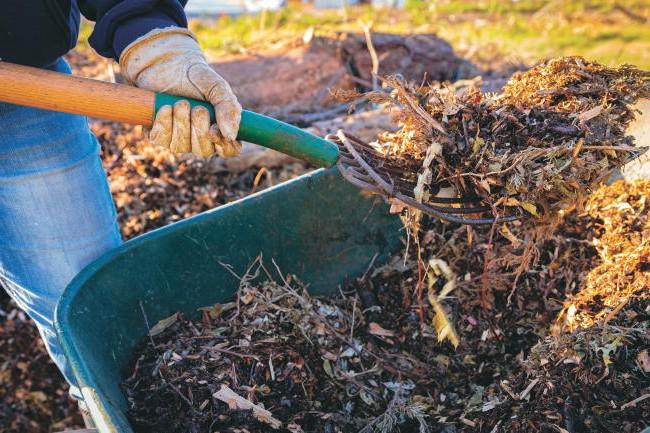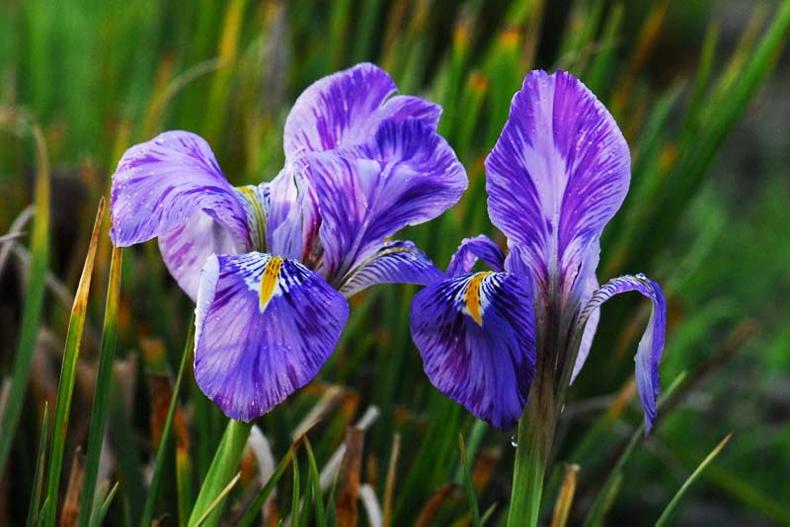Not that there is not a big need for more information and communication with the gardening public, there is also a great deal of confusion. The biggest area of confusion is to see wildflower meadow as a replacement for the once much-desirable tight, green, striped lawn.
This style of green lawn requires high levels of maintenance: weekly or ten-day mowing interval year-round, two or three dressings of fertiliser, weed and moss control every couple of years. Although only a small percentage of lawns achieve this level of excellence, many more aspire to it.
A wildflower meadow is treated very much like a traditional hay meadow, allowed to grow from March or April until the end of June or early July before mowing and the removal of the cut grass.
Then mow once each couple of months until October, the garden equivalent of after-grass.
While this approach is suitable for large areas of lawn especially those with lots of spring bulbs, allowing them to die back, it has the drawback of requiring a mowing machine capable of cutting tall grass, and the inconvenience of having to remove the mown grass to reduce soil fertility.
It is ironic that the green-velvet type lawn requires relatively high levels of fertiliser, while the meadow equivalent requires the reduction of soil fertility in order to favour the wildflowers, which need low fertility soils.
Alternative
A wildflower lawn offers a good alternative to a high-maintenance lawn and to a wildflower meadow. This lawn management system seeks to mimic old-style grazed pasture, set-stocked. The advantage of this approach is that an ordinary lawn mower can be used, with ease of access and manoeuvrability. It is easy enough to convert an existing lawn into a lawn managed to encourage wild flowers.
Many lawns are already halfway to being wild flower lawns in any case, so why not go the rest of the way with it?
To manage a wild flower lawn, the key point is to place the emphasis on the broad-leaved plants in the sward rather than on the grasses, and weedkillers are never used on a wildflower lawn.
Fertilisers are not used on a pasture lawn either, except very occasionally if the growth of the sward becomes very weak. But if fertiliser is used, it should not be the high-nitrogen kind, but a balanced general fertilizer such as 10-10-20 at 15 gramms per square metre.
Daisies, white and red clover, buttercups, dandelions, self-heal, lesser celandine, cat’s ear, hawkweed and bird’s foot trefoil will thrive, coarse weeds such as nettles and docks struggle under regular mowing.
Damp areas
In damp areas, set the level of the mowing blades to the second highest stop on the height adjuster. Mowing should start with one cut in January, February and March.
When growth picks up, mowing will be required more regularly – between fortnightly and three-week intervals depending on the rate of growth of the lawn.
As the wildflower lawn matures, and the rate of grass growth declines, it will become easier to mow and require less frequent mowing, half as much as before.
The regular cutting away of flower heads keeps the plants flowering much longer than they would naturally, in a wildflower meadow.
Many kinds of wildflowers are capable of growing relatively tall in competition with grass, but if grass competition is reduced, they can flower at much lower heights.
Most lawns already carry a share of broad-leaved species, which increase in number under a wildflower lawn regime. The native species can be introduced, or re-introduced, to increase the ornamental value of the lawn area.
This can be done by raising seedlings in celltrays and planting into squares of sod turned upside down. This is a slow process, but a great deal can be achieved in a few years.
Alternatively, the ground can be cultivated and a seed-mix sown to suit local and soil conditions. If the species chosen are not correct, the plants introduced will soon show their disapproval by dying.
The mown grass should be removed from the wildflower lawn until about the middle of May. A wildflower lawn would suit many rural gardens, especially those with an informal atmosphere.
A sward of wildflowers, not mown so tight, is much more natural. There is also the considerable advantage of the wildflower lawn that it is actually easier to maintain, along with reduced expense.
While the total area of gardening wildflower lawns is very much smaller than the use of land for modern grassland management systems, it is worth adopting this approach for its beauty, charm and gardening advantages.
Time was, about thirty years ago, when many urban and suburban gardens depended on summer bedding for their annual show of colour.
Rural gardens, being larger in general, featured shrubs and trees, simply because these are bigger plants that fill more space. In recent years, the role in the garden for bedding plants has changed significantly.
As once, bedding plants were essentially, that: they were planted in flower beds, much as can be seen in public park planting.
This planting dates back to the late nineteenth century and it is considered part of these public parks, historical context.
The new role, relatively new that is, still can contain an element of bedding to fill at the front of mixed flower borders, but the major value of summer bedding plants these days is in containers of all kinds.
Choose colours and species that suit their surroundings. In general, it is best not to plant out too early. The end of May is the marker for most people, earlier in some in the southern areas.
Flowers
The weather was rather cool and wet in May and not much chance arose to plant out bedding plants or to pot up containers. It is always best to wait a while and there is still plenty of time. Water the young plants immediately after planting out.
Lawns
Continue regular mowing and keep the edges around kerbs and flower beds or borders trimmed to maintain a neat appearance. If you wish to control lawn weeds, good results will be achieved with lawn weedkillers at this time of year.
Fruit, vegetables and herbs
There is still time to repeat sow vegetables sown earlier, such as lettuce, peas and carrots. Thin out vegetables that have reached suitable size, and sow winter and savoy cabbage varieties for winter and early spring use. Plant out tender vegetables.
Trees, shrubs and roses
Prune early summer shrubs as they go out of flower, if they are too big or need shaping. It is best to thin out shrubs rather than shorten back every branch. There is still time to prune evergreen trees. Spray roses against blackspot disease, or replace them.
Greenhouse and House plants
Plant out tomatoes, chilli peppers, cucumbers and sweet peppers as soon as possible, if not already done because these need to make rapid growth now. House plants can be re-potted now. Continue to feed greenhouse plants strongly and to water well.









SHARING OPTIONS